INTRODUCTION
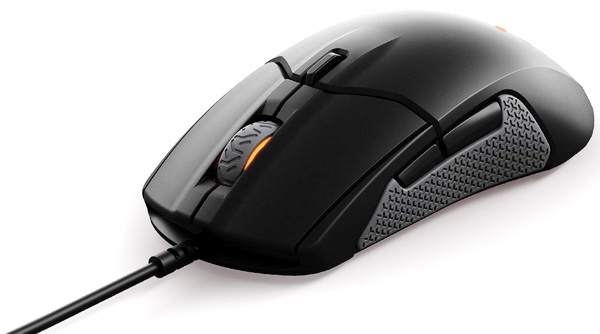
If you've been around PC's for as long as i have then you should remember the very first IntelliMouse released by Microsoft back in 1996 which also became the basis for all their models to come after it. As a matter of fact even the IntelliMouse was partially based on the Mouse 2.0 released again by Microsoft in 1993 so it wouldn't be a stretch to say that it's largely thanks to Microsoft that gaming mice are the way they are today. Still Microsoft never did take huge steps in the PC gaming industry (at least not in terms of gaming peripherals - although to be completely fair they did try quite a bit in the late 90's early 2000's) and so several new manufacturers like SteelSeries, Logitech and Razer emerged to fill the void (the rest as they say is history). SteelSeries recently released the SENSEI 310 Ambidextrous Esports Gaming Mouse and it's been sitting in our lab for slightly over a month now.
SteelSeries has fueled the gaming industry by creating innovative new products, designed specifically for eSports and passionate gamers everywhere. Here at SteelSeries, we are obsessed with “firsts”. Dating back to 2001, our company was formed to meet the surface needs of hardcore gamers by introducing the first glass mousepad, the Icemat. Since that original innovation, we created the first mechanical gaming keyboard, the first suspended headband for gaming headsets, the first World of Warcraft mouse and endless other innovations. SteelSeries is dedicated to building products that push professional gaming further than anyone dreamed. Those innovations make gaming more competitive and more fun for gamers everywhere.
The SENSEI line of gaming mice by SteelSeries is not only among their oldest ones dating back to 2011 but it's also their most updated one with a total of 5 models released to date (SENSEI/SENSEI MLG/SENSEI RAW/SENSEI Wireless/SENSEI 310). What made the SENSEI one of the best selling models by SteelSeries was its near excellent grip offered by its very comfortable and ergonomic ambidextrous shape (which if i might add resembled the IntelliMouse one quite a bit) and so it's no wonder really that many manufacturers (SteelSeries was so confident about the shape so they also released the almost identical XAI, KINZU and KANA models roughly at the same time as the SENSEI) used similar shapes in later models. SteelSeries aims to continue the saga they begun back in 2011 with their latest SENSEI 310 Ambidextrous Esports Gaming Mouse and although its shape is not exactly the same as the earlier models it does come close. As for under the hood of the fiber reinforced plastic enclosure well this time over SteelSeries has paired the same TrueMove3 optical sensor as in their RIVAL 600 and 310 models (zero hardware acceleration with a resolution of 12.000CPI, 350+ IPS tracking speed, 50G's acceleration and 1ms polling rate) with OMRON switches for the primary split-trigger buttons (50 million clicks), an 32-bit ARM processor (onboard profiles) and 2 independent RGB lighting zones (4 effects).
SPECIFICATIONS AND FEATURES

PACKAGING AND CONTENTS
Almost the entire front of the box is taken by a very large product picture which is surrounded with the company logo and the main product features.
The product features are also printed at the rear of the box in 8 languages (the complete list is only printed in 3).
Once the exterior of the box is removed you will see a cardboard cover with the SteelSeries logo and their Rise Up modo.
As you can see the mouse is placed securely inside a formed piece of black foam.
SteelSeries has placed just the product information guide inside the box of the SENSEI 310.
THE SENSEI 310
Measuring 125.1mm in length, 70.39mm in width and 38.95mm in height the 92.1g heavy SENSEI 310 is almost identical to the original (125.5x68.3x38.1mm and 102g).
To have a better idea about its size and shape we placed the SENSEI 310 right next to the ZEUS P1 RGB by GAMDIAS, RIVAL 600 by SteelSeries, NEMESIS by TteSPORTS and Revenger S by COUGAR (we happened to have all of these gaming mice here at the same time so such a comparison was possible).
Two fully programmable buttons are located on the left side of the enclosure just over a rubberized area.
The company logo is once again one of the two RGB lighting zones and is located at the rear of the enclosure.
Two more fully programmable buttons are placed on the right side and again over a rubberized area (since this is an ambidextrous model both sides are identical).
The CPI toggle button is as usual placed at the top of the mouse right over the primary buttons.
Typically the clickable scroll wheel is rubber coated and also one of the 2 RGB lighting zones.


Three large PTFE feet and the TrueMove3 optical sensor are all located at the base of the Sensei 310.
The two meter long rubber cable (not braided) has a regular (not gold plated) USB plug at the end.
ENGINE 3 SOFTWARE
As usual in order to download the latest version of the Engine 3 control software you will need to visit the official SteelSeries support/downloads page as seen above.
Once you download and install the software it will automatically check for new firmware updates and if there are any it will notify you.

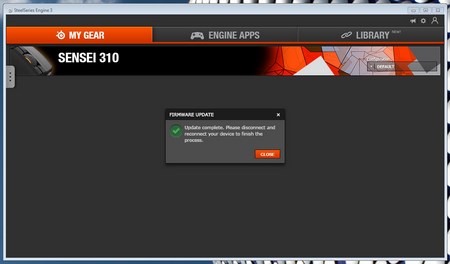
The update procedure takes less than a minute to complete and then you are just required to unplug the mouse and then plug it back in.

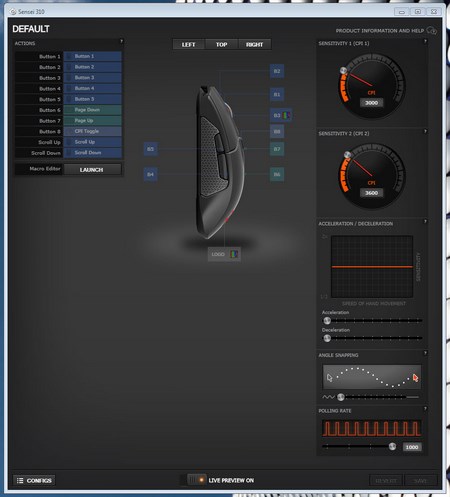



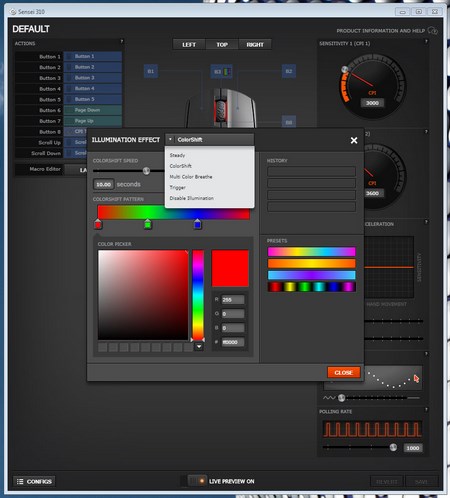
The SteelSeries Engine 3 is one of the most thorough and yet easy to use software control panels in the market. From here you can program any of the 8 available buttons, set the sensitivity (CPI) levels, adjust sensor acceleration and deceleration, enable/disable angle snapping, set the polling rate, create macros and of course adjust the RGB illumination for all 2 zones (4 available effects).
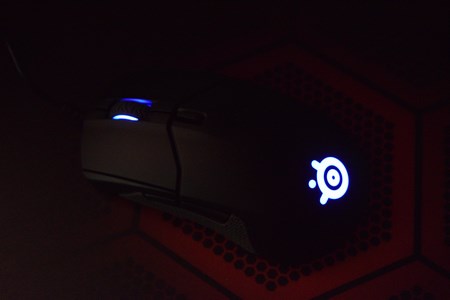
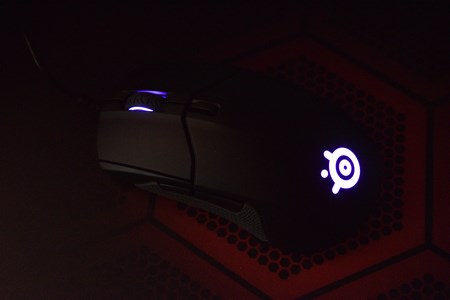
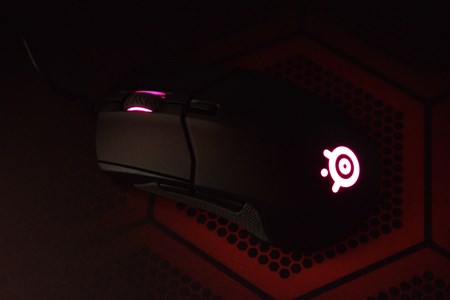


Here we've placed some of the available out of the box colors one can use with the SENSEI 310.
CONCLUSION
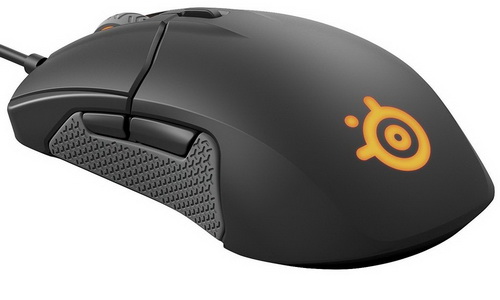
Since I used both the original SENSEI and its successor the SENSEI MLG for a long time (I still have them somewhere) I was very eager to test the SENSEI 310 out which is also why I did for over a month (primarily with games like World Of Warships, World Of Tanks and Star Citizen). Personally I don’t think that SteelSeries managed to “copy” the shape of the original so the SENSEI 310 didn’t feel just as good in terms of grip but it does come quite close and it so it took me less than a couple of hours to get used to it (unfortunately it's not as heavy as i'd like it to be - even 10g more would suffice). Just like with the RIVAL 600 and 310 the very fast and accurate TrueMove3 optical sensor works like a charm (if you don’t like the zero acceleration feature you can always change that from within the Engine 3 software) and we still consider it to be one of the top 3 in the market today (not surprising all are made by Pixart). The 2-zone RGB lighting system is a bit limited so if you want to get your hands on an impressive looking mouse the SENSEI 310 is not it (2 zones are plenty for me however).
The SENSEI 310 has been around a few months already and so it currently retails for just USD53.30 inside the USA (Amazon.com) and for 61Euros inside the EU (Amazon.co.uk). Just for the record this price tag is much less than what even the original SENSEI retailed for at launch so we think it’s more than just fair for what you’re getting. At the end of the day in a market filled with high-performance gaming mice by a large number of manufacturers the new SENSEI 310 may not feel as impressive as the original but it’s just as good and for that it certainly deserves our Golden Award.

PROS
- Build Quality (Fiber Reinforced Frame / OMRON Switches)
- Ambidextrous Design
- Near Excellent Grip
- Very Fast and Accurate (TrueMove3 Sensor)
- Dual Zone RGB Illumination
- Engine 3 Software
- Price (For Some)
CONS
- Plain Cable And USB Plug
- Weight (Slightly More Would Be Ideal)

 O-Sense
O-Sense





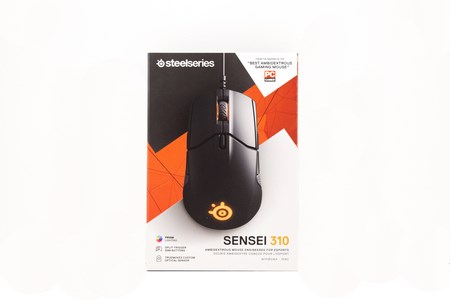
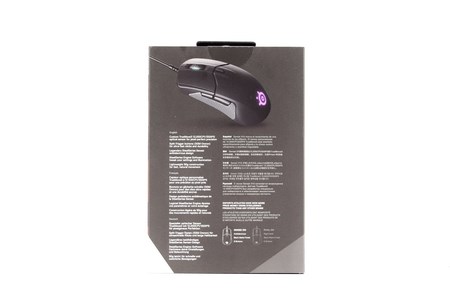

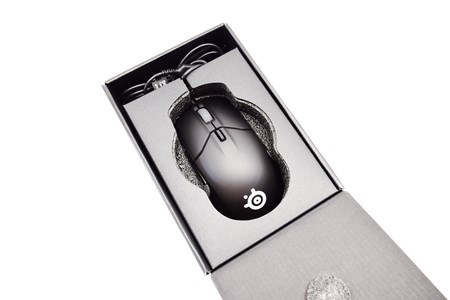
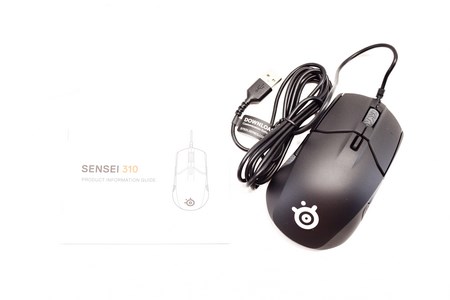
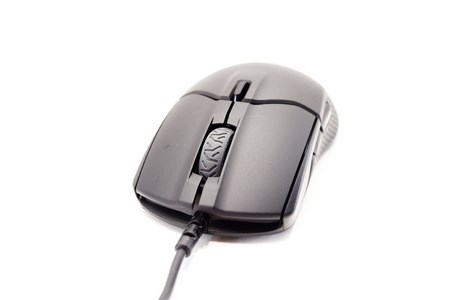


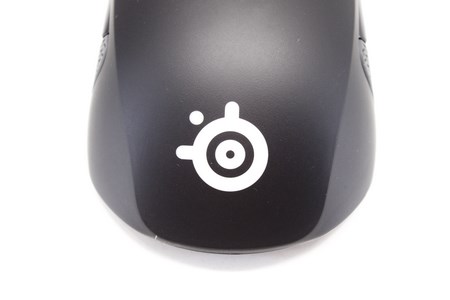
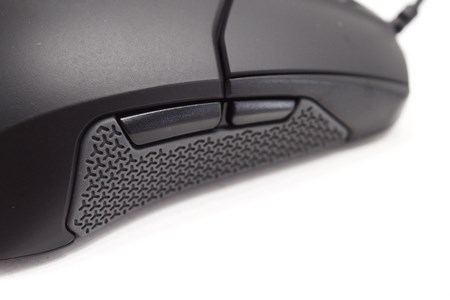
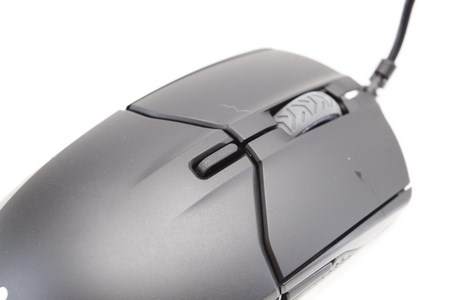
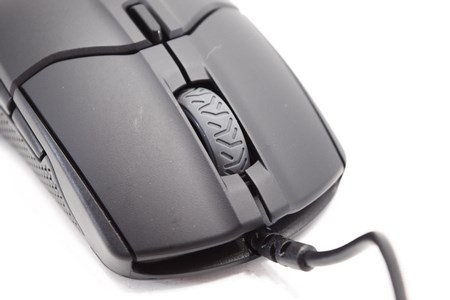

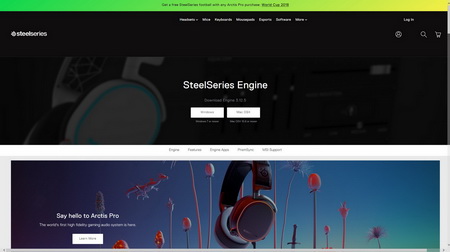
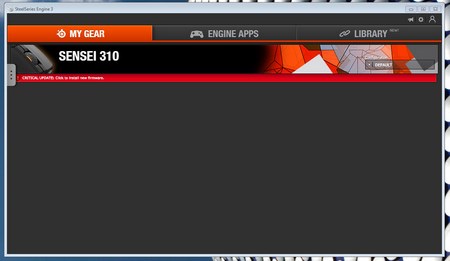


.png)

